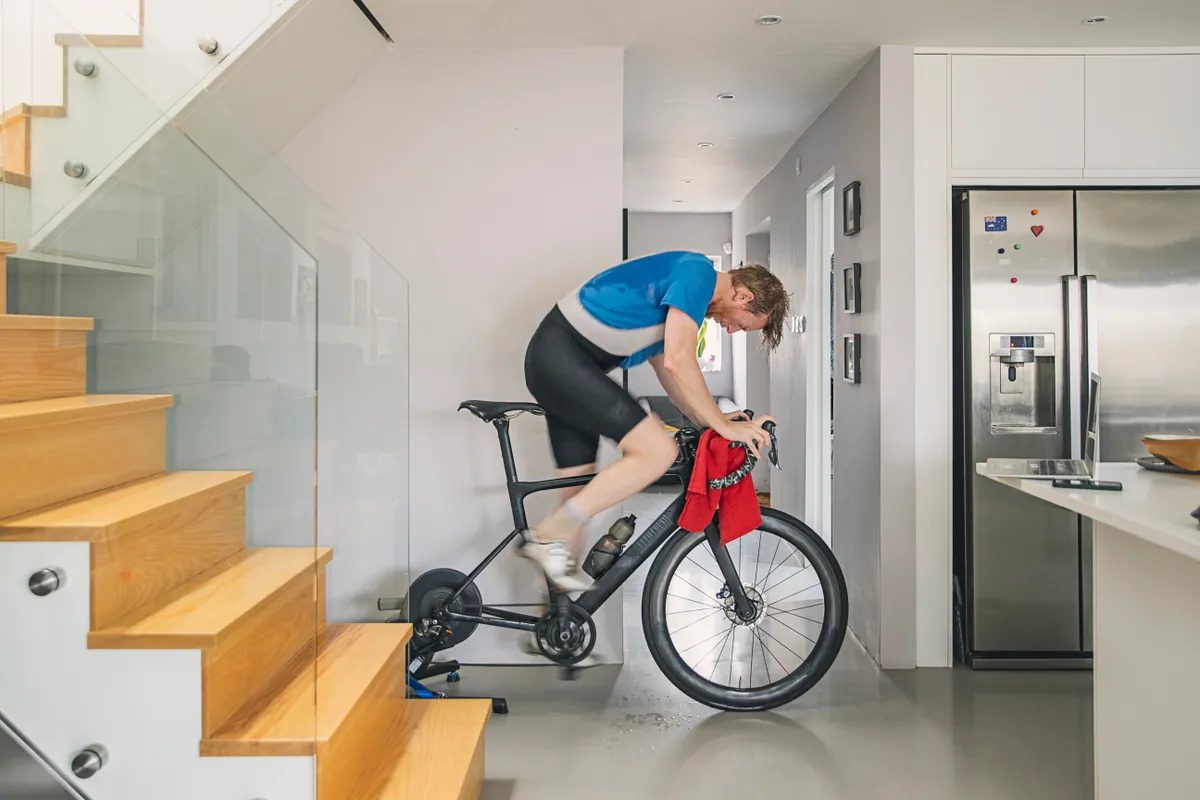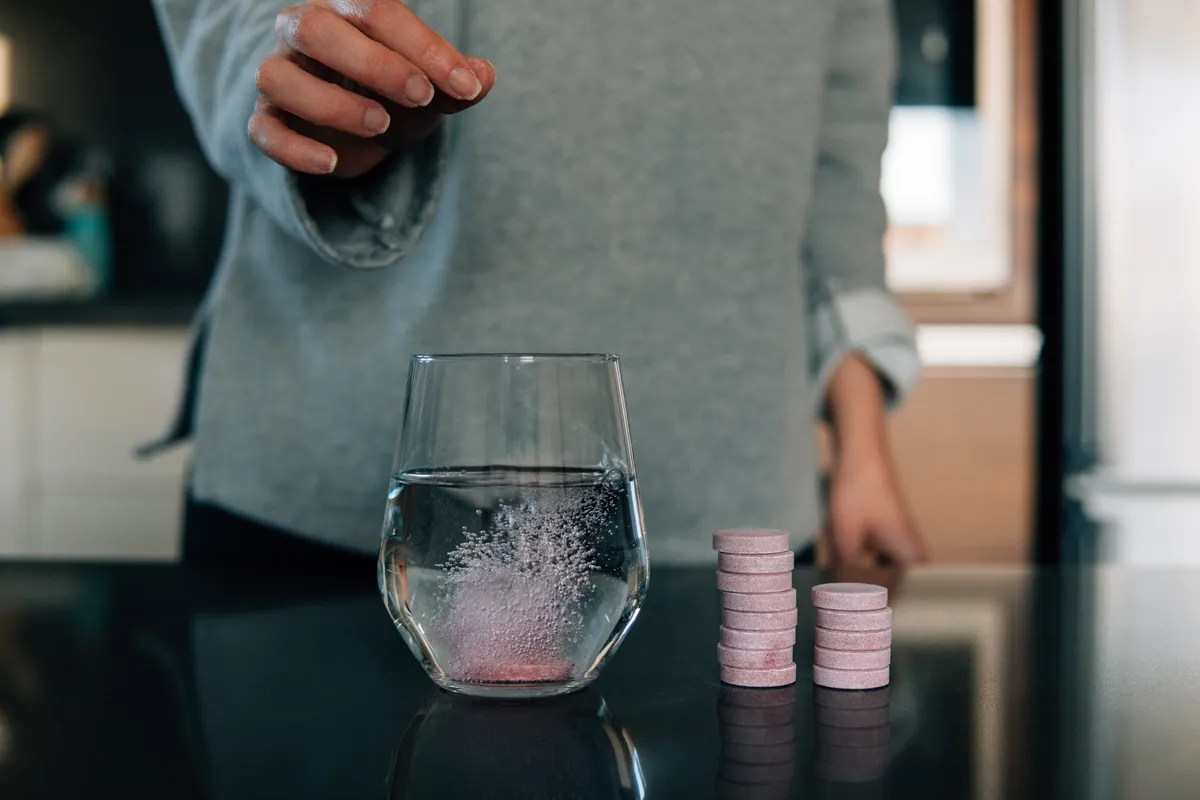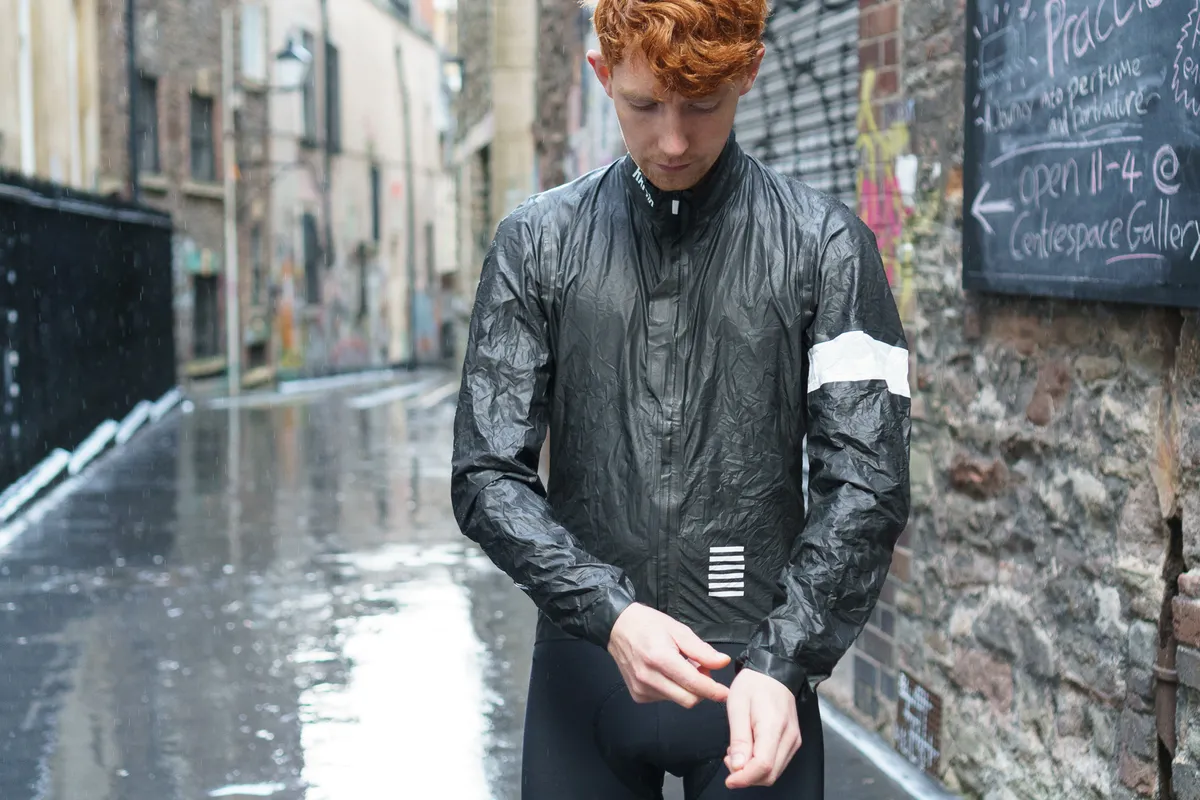While it can be tempting to continue riding with a mild illness, knowing when to stop and when it’s possible to keep going is crucial.
But which symptoms and maladies aren’t strong enough to prevent you from riding, or are so debilitating that riding will only make the situation worse?
Read on through your bloodshot eyes to find out.
List your symptoms

“Before answering those questions, it’s important to differentiate between a cold and the flu, because these terms are commonly used interchangeably to describe the same illness or constellation of symptoms,” says Adrian Rotunno, medical director at Tadej Pogačar’s UAE Team Emirates.
Rotunno’s well versed in dealing with riders at risk of infection, because intense exercise (three-week Grand Tours, for instance) leads to a drop in lymphocyte count (a sub-type of the white blood cells that attack foreign bodies), which makes a rider more susceptible to illness.
“A cold – several viral causes (eg, rhinovirus) – and the flu (caused by the influenza virus) are both respiratory illnesses, but caused by different viruses. They have different symptoms and levels of severity,” Rotunno continues.
A cold is usually a milder illness and symptoms include a runny or stuffy nose, sore throat and coughing. The flu is more severe and symptoms include fever, chills, body aches and fatigue.
The flu can also lead to more serious complications such as myocarditis (inflammation/damage to the heart muscle) or pneumonia, particularly in certain groups such as the elderly or people with underlying health conditions.
Know when to rest

So, first things first, be aware of your symptoms, the severity of which may require a visit to the doctor.
“Ultimately, if you’re exhibiting any systemic symptoms of fever, body or muscle aches, elevated resting heart rate and fatigue, it’s better to avoid training altogether and allow for recovery,” says Rotunno.
That means having five to seven days of complete rest, followed by a gradual low-intensity and distance re-introduction of cycling that’s slowly built up over the next 10 to 14 days. This is a guideline, of course, but if symptoms persist or new ones develop, it’s advised to seek professional medical advice before continuing with any exercise.
“If you have no systemic symptoms – blocked or runny nose, etc – then it’s likely you can return to training earlier,” adds Rotunno, “but, once again, with a low-intensity and low-distance approach that’s gradually built up over the next seven to 10 days. Again, if no improvement, allow for recovery and seek medical advice.”
Below the neck

If you’re looking for shorthand advice on whether you should ride, fall back on the ‘below-the-neck’ rule.
In general, if you have below-the-neck symptoms, such as a chesty cough, stomach symptoms or a fever, you should rest. Riding with a chesty cough may put extra strain on the lungs and heart, as well as resulting in more stops to cough up the extra mucus.
If you’re just a little sniffly in the nose, that could be the green light to ride – but always be honest with yourself.
Taking a little time off could put you in a stronger position long-term if it aids a hastened recovery, particularly if you’re continuing to juggle life’s commitments elsewhere.
Think of others

If you decide you’re okay to ride, that’s great. For you. But you clearly won’t be the most popular member of your Sunday-morning peloton if you spread whatever’s streaming out of your nasal passage with the power output of a Wout van Aert sprint.
“That’s where hand-washing comes in,” says Ralph Mitchell, a doctor in sports and exercise medicine who was the Covid lead for the English rugby union team Wasps during the pandemic.
“We all got used to it during the first couple years of Covid-19, and it’s something you should continue as it really helps to reduce the passing of viruses,” adds Mitchell, who is also a keen cyclist, a self-confessed Zwift addict and multiple conqueror of Mont Ventoux.
Mitchell also recommends having flu vaccines, while also refraining from sharing utensils, towels and other commonly shared goods where possible.
If you are ill and choose to cycle, solo rides are advised. This is where indoor cycling pays dividends, but ensure your closed areas are as well-ventilated as possible. “This is difficult during the cold of winter but is proven to reduce the spread of viral droplet infection,” says Mitchell.
Boost your recovery

So, you’ve done your bit for cycling humanity by preventing the spread of your illness. But what about you, dear reader?
Some might see this as the age of empathy, but you’re sitting there forlornly in your bib shorts, looking in the mirror and reflecting on the healthier times of last summer when you resembled professionals Annemiek van Vleuten and Mathieu van der Poel.
Now, you’re a mucus-stained shell. It’s time for some ‘me’ time and that means ideas to accelerate your recovery to full health.
“There are many things you can do to strengthen your immune system,” says Helen Metcalfe, an NHS GP and keen road cyclist. Metcalfe recommends the following:
- Ensure adequate hydration by drinking plenty of fluids
- Your body needs more rest than usual when you’re unwell, so you may need to slow down and give yourself some early nights to enable recovery
- Vitamin C has long been considered as having cold-busting properties but, if you’re someone who starts glugging the orange juice at the first sign of a snuffy nose, it’s worth bearing in mind that scientific research doesn’t really back up this belief. In reality, your cold will likely progress in the same way regardless of how much citrus fruit you consume. The same goes for turmeric
- However, one of the most important ways to ensure you fight off illnesses effectively is by having a balanced and nutritious diet, which does include having a good intake of a range of vitamins
- Vitamin D deficiency impedes immune function and this condition is common in the UK (and other sunlight-neglected countries) during winter and spring. The World Health Organisation (WHO) recommends that all UK citizens should take an over-the-counter vitamin D supplement throughout the winter months. A usual maintenance dose to prevent deficiency would be around 1,000iu daily
These are all proven strategies to bolster your defences in fighting off illness but, above all else, you must remember to be patient.
Strengthen your defences

Of course, prevention’s better than cure, begging the question: how can you boost your chances of avoiding becoming ill through cycling this winter?
“You should always head out on a winter ride well-prepared,” says Metcalfe. Don’t underestimate how chilly you might feel if you have to stop to fix a puncture, for example.
“That means layering up with plenty of thin layers that you can peel off and stuff into your pockets if you become too hot, but which you can pile on if you do have to stop unexpectedly or are taken aback by the low temperature or wind chill.
“A pair of warm gloves, socks/overshoes and headwear like a skull cap are important because we lose a lot of heat from our head and our extremities.”
If it starts to rain, you should also stop sooner rather than later to put on your waterproof jacket. The wet and cold are the perfect combination to send you to bed with hypothermia.
“Also, you may find that the cold, dry air irritates your airways,” adds Metcalfe. “Wearing a buff or similar that you can pull up over your mouth and nose can help, especially on those long, chilly descents.
“If you’re asthmatic, then carry your reliever inhaler with you. Finally, riding indoors more during the winter will prevent many of these challenges.”
Follow the pros

You can also add a high-tech solution to your preventative toolkit and that’s heart rate variability (HRV). HRV is the variation in time between successive heartbeats and is used to monitor the balance between the sympathetic and parasympathetic branches of the autonomic nervous system in assessing your readiness to train.
It’s a metric that’s flirted with the masses for years but has always remained on the periphery. For professionals, however, it’s pretty common.
“We use it at UAE Team Emirates,” says Rotunno. “It’s a non-invasive tool to assess the state of the autonomic nervous system and to detect changes in the body that may indicate overtraining, fatigue and illness. It’s also useful in monitoring recovery.”
HRV is available to recreational riders via some smartwatches, separate training tools and apps, including HRV4Training, an app that you can download to your smartphone, which takes measurements by holding your finger over the camera.
“We also monitor sleep patterns and variations thereof,” Rotunno continues. “All of this data is integrated into a team platform app that alerts all medical and performance staff that there may be a problem looming and so allows us to intervene early to prevent complications later on.”
As ever with any training tool, the more you use it, the more useful it is. In fact, that consistency is key to riding through the winter in as healthy a condition as possible. Be consistent with a healthy diet and a cycling schedule that doesn’t batter you each and every ride, and you’ll give yourself a strong chance of hitting the rest of the year in as close as possible to peak condition.
